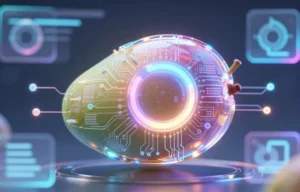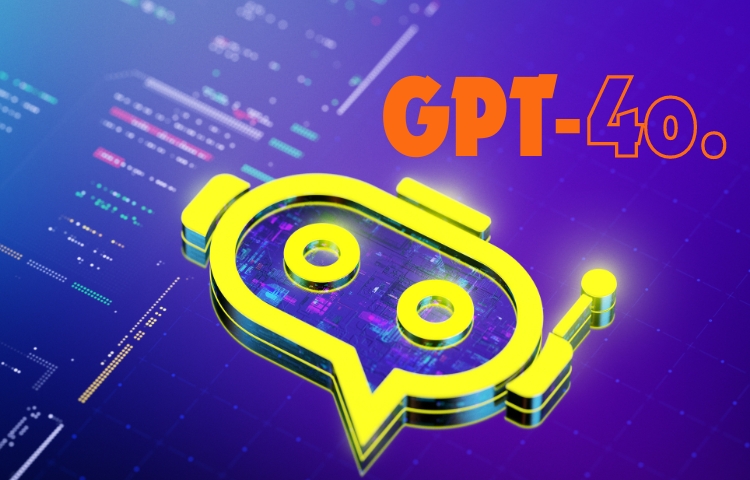

Prefer to listen instead? Here’s the podcast version of this article.
OpenAI has introduced its latest model, GPT-4o, which builds upon the success of GPT-4. GPT-4o offers enhanced capabilities, refined features, and broader applicability across various domains. In this article, we’ll explore what GPT-4o is, its standout features, ideal use cases, and how it differs from its predecessor, GPT-4.
What is GPT-4o?
Imagine a symphony in which each instrument plays not just to be heard but to create a harmonious masterpiece, blending precision with creativity. This is the essence of GPT-4o.
GPT-4o, or “GPT-4 omni,” is OpenAI’s latest advancement in language models. It is designed to offer superior performance, efficiency, and adaptability across various natural language processing tasks. Building upon the robust architecture of GPT-4, GPT-4o incorporates optimizations that make it faster, more accurate, and more versatile, thus catering to a broader range of applications and industries. This new model aims to deliver improved context understanding, reduced computational overhead, and enhanced security features, making it a more robust and reliable tool for businesses and developers. Let us explore the capabilities of GPT-4o that drive the performance in detail.
Multimodal Capabilities
GPT-4o introduces a significant advancement in handling various types of inputs by seamlessly integrating text, audio, and visual data like images and video. Unlike GPT-4, which focuses primarily on processing text inputs, GPT-4o natively understands and responds to speech without first transcribing text. This enhanced multimodal capability paves the way for innovative applications that require a combination of different modalities, such as interactive voice assistants, real-time translation services, and more immersive multimedia experiences. By accommodating diverse input forms, GPT-4o expands the horizons of what artificial intelligence can achieve, making it a versatile tool for developers and users alike.
GPT-4o possesses sophisticated vision capabilities, allowing it to analyze and precisely interpret visual data such as images, charts, and diagrams. It can describe visual elements in detail, identify objects and patterns within images, and even generate new images based on textual prompts. This feature is immensely valuable for businesses, as it can be leveraged for various tasks, including image captioning, visual storytelling, and content generation. By incorporating visual analysis, GPT-4o enhances its ability to interact with and understand multimodal content, broadening its applicability.
In addition to text and visual data, GPT-4o also processes and generates audio data, making it a versatile tool for various applications. Its speech recognition feature allows it to understand and transcribe spoken language, providing accurate and reliable transcription services. Furthermore, GPT-4o’s text-to-speech conversion capability transforms written text into natural-sounding speech, which can be used for voice assistants and other applications requiring auditory output. Additionally, GPT-4o can analyze audio content, making it useful for tasks such as audio transcription and the development of voice-driven applications. This comprehensive set of audio capabilities ensures that GPT-4o can interact with users through multiple sensory channels, enhancing the overall user experience.
Speed and Efficiency
The new model boasts significant improvements in speed and efficiency, markedly surpassing its predecessors, particularly in handling audio inputs. One of the standout features is its average response time of just 320 milliseconds, which makes it exceptionally well-suited for real-time interactions. This remarkable speed boost enhances the overall user experience and makes it possible for voice assistants to operate more efficiently. The new model ensures smoother and more seamless user interactions by reducing latency and enabling quicker responses.
The efficiency of GPT-4o extends beyond its linguistic capabilities. Its advanced processing power and optimized algorithms allow it to quickly generate high-quality content with fewer computational resources than GPT-4. This leads to significant cost savings for users as they can achieve the same or better results with reduced computational expenses. Additionally, the ability to handle multiple languages within a single model eliminates the need for separate models for different languages, further lowering costs and simplifying maintenance. According to OpenAI, GPT-4o is 50% cheaper across both input and output tokens. By integrating these efficiencies, GPT-4o offers a more cost-effective solution for businesses and individuals seeking advanced AI capabilities.
Enhanced Language Support
One of the significant advancements in GPT-4o is its enhanced capability to support non-English languages. This model can process and generate text in over 50 different languages, making it exceptionally accessible and versatile for a global audience. Whether you’re communicating in English, Spanish, or any other language, GPT-4o ensures comprehensive support, allowing users to interact seamlessly across diverse linguistic contexts. This improvement not only broadens the utility of the model but also fosters better communication and understanding in a multilingual world.
High Context Window
GPT-4o is equipped with an extended context window, which allows it to process and consider a significantly larger amount of context (128k versus 8k for GPT-4) from the input data. This advanced feature ensures that GPT-4o can understand and retain more information from the preceding text, enabling it to provide more accurate and nuanced responses. The extended context window is particularly beneficial when dealing with complex prompts that require a deep understanding of the subject matter, as it ensures that the responses are coherent and context-aware.
Exploring Use Cases
As we have unveiled the sophisticated features and remarkable capabilities of GPT-4o, it’s akin to discovering the hidden talents of a virtuoso. Each facet of this advanced model reveals new potential and extraordinary performance. But where does this brilliance find its best stage? How do these features translate into real-world applications? Let’s journey into the practical realm and explore the ideal use cases where GPT-4o’s unparalleled abilities truly shine, demonstrating its transformative impact across various industries.
Language Translation and Cross-Cultural Communication:
Education and Learning Enhancement:
Healthcare and Medical Imaging:
Content Creation and Marketing:
Art and Creativity:
Virtual Assistants and Customer Support:
Takeaways
OpenAI’s GPT-4o represents a significant evolution in artificial intelligence technology, pushing the boundaries of what AI can achieve across multiple modalities. Its introduction marks a notable improvement in speed, efficiency, and versatility over its predecessor, GPT-4, particularly with its advanced multimodal capabilities that integrate text, audio, and visual data processing. This enhancement broadens the scope of applications and increases accessibility with its support for over 50 languages and an expanded context window for better understanding and response accuracy. GPT-4o excels in a variety of industries, from healthcare and education to content creation and customer support, showcasing its potential to revolutionize how businesses and individuals interact with AI. Overall, GPT-4o is a robust platform that stands out for its innovative integration of diverse inputs and ability to deliver precise and context-aware outputs swiftly and efficiently, making it an indispensable tool in the ever-evolving landscape of artificial intelligence.
WEBINAR